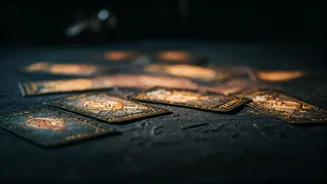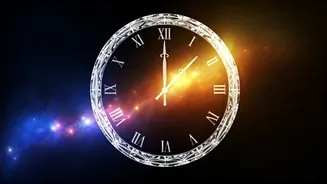Ancient Origins and History
Tarot cards, steeped in history, initially appeared in mid-15th century Europe. Contrary to popular belief, they weren't originally created for divination.
Instead, they were used for games, particularly in Italy and France. The earliest known tarot decks were commissioned by wealthy families, with the cards featuring elaborate artwork. Over time, the cards gradually evolved, incorporating symbolic imagery and spiritual meanings. By the late 18th century, tarot began to be used for fortune-telling and self-reflection, which led to the connection with occult and esoteric practices. This transformation marked the beginning of tarot's modern association with mystical and psychological insights. The cards' journey from recreational tools to instruments of spiritual exploration is a testament to their enduring allure and adaptability throughout centuries.
The Structure of Tarot
A standard tarot deck consists of 78 cards, split into two main sections: the Major Arcana and the Minor Arcana. The Major Arcana contains 22 cards, each representing significant life themes and archetypal figures. These cards depict pivotal moments and experiences, ranging from The Fool's journey to The World's completion. The Major Arcana provides insights into the major influences in a person's life, the lessons to be learned, and the challenges to overcome. The Minor Arcana, on the other hand, comprises 56 cards, divided into four suits: wands, cups, swords, and pentacles. Each suit corresponds to a different aspect of life. Wands are associated with action and creativity, cups with emotions and relationships, swords with intellect and conflict, and pentacles with material possessions and stability. The Minor Arcana adds depth and nuance to readings, offering details about day-to-day situations and choices, thus providing a more comprehensive understanding.
Interpreting Card Meanings
Each tarot card possesses a multitude of meanings that can shift depending on its position within a spread and the surrounding cards. Every card can offer upright and reversed meanings, adding another layer of complexity. The upright position of a card typically signifies its positive traits and influences, while the reversed position suggests potential challenges or blockages. For instance, the upright 'Strength' card indicates inner strength and courage, while the reversed version might suggest a lack of self-control or self-doubt. Understanding the symbolism of each card is key to interpreting the cards' meanings. The images on the cards offer visual clues that can be combined with intuition and personal experience. By practicing with the cards and studying the cards, individuals learn to connect with the archetypal energies and gain meaningful interpretations.
Reading the Tarot
The art of reading the tarot relies heavily on specific card arrangements, referred to as spreads, and each has its own purpose. The simplest spread, the one-card spread, offers a quick snapshot of a situation. The three-card spread is popular for examining the past, present, and future, or for answering a specific question. More complex spreads, such as the Celtic Cross, use ten cards to explore multiple areas of a person's life. Readers interpret the cards in their positions, considering the relationships between the cards, as well as the meanings that the individual cards have. The reader's intuition also plays a key role in the process. Skilled readers learn to connect with the cards intuitively and to weave the symbolic meanings into a coherent narrative. Practice and experience help the reader refine their skills and to offer accurate and insightful readings.
Tarot and Modern Life
Today, tarot cards are not merely a means of fortune-telling; they have also become a tool for self-exploration and personal development. Many people use tarot to gain a better understanding of their emotions, to find clarity during life’s difficult choices, or to explore their spiritual paths. The tarot can offer guidance, helping people to make important decisions, to navigate relationships, and to manage stress. The ability of the tarot to give insights into the unconscious mind makes it a popular tool among therapists and counselors. As an example, the cards can prompt deeper reflection, assisting individuals in understanding their patterns, beliefs, and behaviors. Tarot's accessibility and its widespread use is proof of its capacity to connect with people from different walks of life. The increasing popularity of online tarot readings and tarot-related apps demonstrates the ongoing evolution of this ancient practice and its enduring significance.












